![]() Telex
Telex![]() External
Link
External
Link![]() Internal
Link
Internal
Link![]() Inventory
cache
Inventory
cache
![]() Telex
Telex![]() External
Link
External
Link![]() Internal
Link
Internal
Link![]() Inventory
cache
Inventory
cache
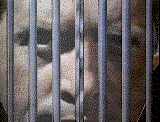 |
The Prisoner
"is all the world jails
and churches?" - Rage Against The Machine - _Vietnow_
This nOde
last updated March 22nd, 2005 and is permanently morphing...
(7 Muluk (Water) /
12 Kumk'u - 189/260 - 12.19.12.2.9)

![]()
prisoner
prisoner (prîz´e-ner,
prîz´ner) noun
1. A person held in custody,
captivity, or a condition of forcible restraint, especially while on trial
or serving a prison sentence.
2. One deprived of freedom of expression
or action: "He was a prisoner of his own personality-of that given set of traits
that . . . predisposed him to see the world in a certain way, to make certain
moves, certain choices" (William H. Hallahan).
"It is perfectly possible for a man to be out of prison, and yet not free - to be under no physical constraint and yet to be a psychological captive, compelled to think, feel and act as the representatives of the national state, or of some private interest within the nation, wants him to think, feel and act.
"The nature of psychological
compulsion is such that those who act under constraint remain under the ![]() impression
that they are acting on their own initiative. The victim of mind-manipulation
does not know that he is a victim. To him the walls of his prison are invisible,
and he believes himself to be free. That he is not free is apparent only
to other people. His servitude is strictly objective."
impression
that they are acting on their own initiative. The victim of mind-manipulation
does not know that he is a victim. To him the walls of his prison are invisible,
and he believes himself to be free. That he is not free is apparent only
to other people. His servitude is strictly objective."
- _Brave New World Revisited_![]() by
by ![]() Aldous
Huxley, 1958
Aldous
Huxley, 1958
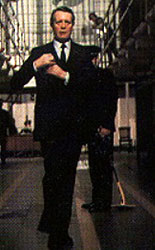 |
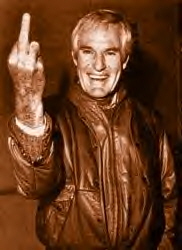 |
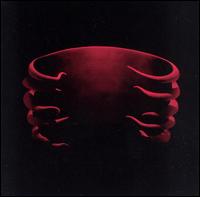 |
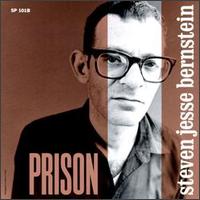 |
 |
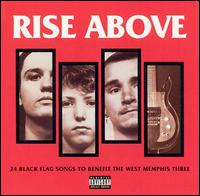 |
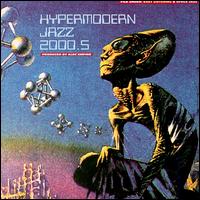 |
 |
![]()
The Prisoner was a daring and original 1967 UK television series, created by and starring Patrick McGoohan. McGoohan himself wrote and directed several episodes, often under a pseudonym. Only 17 episodes were made, though McGoohan's original plan was for just seven. The network wanted a full season of 21 episodes, and 17 was decided upon as a compromise. The entire series is available on DVD in a boxed set.
The titles sequence featured the hero, played by McGoohan, apparently a secret agent working in some government intelligence building in London, having a fierce argument with his superior and resigning. Returning to his flat (the location for which was at Number One Buckingham Place, London — an address that hints at a surprise in the final episode), he quickly packs his possessions, with a colourful travel brochure nearby. Knockout gas is piped into the room by a tall man dressed in black formalwear, rendering him unconscious.
On awakening, he finds himself in a strange village of Mediterranean architecture, filled with other English-speaking people dressed in bright colours. These also turn out to be ex-spies being held captive, not all of which are on Six's side. No one has a name; they all have numbered I.D. badges. Our hero is Number 6; his real name is never mentioned in the series, although fans like to think it is John Drake, the lead character of McGoohan's prior series Danger Man (Secret Agent in the US). McGoohan however has publicly stated Number 6 is not Drake.
The following dialogue exchange ran over all the show's opening titles (except Living in Harmony and Fallout, which is the last episode):
Where am I?
In The Village.
What do you want?
![]() Information.
Information.
Whose side are you on?
That would be telling.
What do you want?
We want information.
You won't get it.
By hook or by crook, we will.
Who are you?
The new Number 2.
Who is Number 1?
You are Number 6.
I am not a number — I am a free man!
(![]() Laughter
from Number 2.)
Laughter
from Number 2.)
The Village is located in an unknown country (the series was filmed at Portmeirion and Penrhyndeudraeth in Wales, and at Pinewood Studios in England, using clever camera tricks to make the resort look larger than it is). In one episode of the series its location is hinted somewhere in Morocco, in another, somewhere in eastern Europe (on the Baltic coast); but the final episode suggests it may be much closer to home.
The Village is ruled by Number 2, whose identity changes
each episode, though some Number 2s did make repeat appearances (notably Leo
McKern, who appeared in three episodes). Number 1 was never seen (except perhaps
in the final episode, though even this is unclear and ![]() subject
to interpretation).
subject
to interpretation).
The Village publishes a newspaper, the Tally Ho; its headlines
and all public signs use a version of the Albertus display typeface in which
the lowercase letter e was ![]() altered
to make it look somewhat like the Greek letter epsilon, and the dot above the
lower case i and j are removed. The Village administrators consist of a formal
council which meets in a large chamber, which of course in
altered
to make it look somewhat like the Greek letter epsilon, and the dot above the
lower case i and j are removed. The Village administrators consist of a formal
council which meets in a large chamber, which of course in ![]() reality
is completely under the control of Number 2. Debates are held with a strange,
mindless uniformity of opinion. "Credit units" serve as currency in
Village shops.
reality
is completely under the control of Number 2. Debates are held with a strange,
mindless uniformity of opinion. "Credit units" serve as currency in
Village shops.
An underground control center monitors closed-circuit
television cameras located throughout The Village. Regular observers continually
spy on Villagers' every movements, and foil Number 6's escape attempts with
the aid of Rover, a large balloon-like device that would chase him, suffocate
him, dragging him back to land if he was attempting to escape by sea via the
nearby beach. Rover was originally ![]() intended
to be a robotic machine, but when the prototype failed to work during the first
episode's shoot, the crew used a weather balloon out of desperation.
intended
to be a robotic machine, but when the prototype failed to work during the first
episode's shoot, the crew used a weather balloon out of desperation.
Throughout the series, Number 2 tried to find out why Number 6 resigned. A variety of interrogation, intimidation, drugs and mind control techniques were used. An intriguing subtext is that Number 6 never learns the identity and loyalty of his jailers — is he being questioned by "us" or "them"? And, since he cannot determine any difference, in the final analysis is there any difference?
Number 6 spent the first half of the series seeking ways
to escape, then turned his ![]() attention
to finding out more about The Village and how to bring it down from within.
In "Hammer into Anvil," he reduces the new Number 2 to a mad, paranoid
wreck through a series of pranks. While the powers behind The Village always
foil Number 6's escape attempts, he never reveals why he resigned. Several episodes
end with Number 2 being sent home in disgrace, having failed to break him. (Evidently,
this is enough to warrant some kind of severe punishment for Number 2.)
attention
to finding out more about The Village and how to bring it down from within.
In "Hammer into Anvil," he reduces the new Number 2 to a mad, paranoid
wreck through a series of pranks. While the powers behind The Village always
foil Number 6's escape attempts, he never reveals why he resigned. Several episodes
end with Number 2 being sent home in disgrace, having failed to break him. (Evidently,
this is enough to warrant some kind of severe punishment for Number 2.)
The series featured striking and often ![]() surreal
story lines, including one diversion into outright parody ("The Girl Who
Was Death") and simulations of
surreal
story lines, including one diversion into outright parody ("The Girl Who
Was Death") and simulations of ![]() hallucinogenic
drug experiences. In "Many Happy Returns," Number 6 awakens to find
the entire Village deserted, and eventually makes it back to London on a makeshift
raft, only to find a surprise waiting for him; more than half of the episode
contains no dialogue. "Do Not Forsake Me, O My Darling" did not star
McGoohan at all (except for a few shots), as he was in America filming Ice Station
Zebra; the episode featured the contrivance of Number 6's mind being
hallucinogenic
drug experiences. In "Many Happy Returns," Number 6 awakens to find
the entire Village deserted, and eventually makes it back to London on a makeshift
raft, only to find a surprise waiting for him; more than half of the episode
contains no dialogue. "Do Not Forsake Me, O My Darling" did not star
McGoohan at all (except for a few shots), as he was in America filming Ice Station
Zebra; the episode featured the contrivance of Number 6's mind being ![]() implanted
in another man's body (Nigel Stock, from The Great Escape), who is then sent
out of The Village to help capture an enemy scientist.
implanted
in another man's body (Nigel Stock, from The Great Escape), who is then sent
out of The Village to help capture an enemy scientist.
Number 6 always wore a Village-supplied black suit with
white piping, though never his "6" I.D. badge (except briefly in an
election campaign in Free For All). Characters said goodbye to each other with
the phrase "be seeing you," accompanied by a ![]() waving
gesture consisting of thumb and forefinger forming a circle over the right eye,
then tipped forward in a kind of salute. "I'll be seeing you" was
a popular expression in Britain in the 1940s, when it was jocularly pronounced
"Abyssinia", and McGoohan uses the phrase in real life. (The Psi Corps
in Babylon 5 used the phrase and gesture in a deliberate homage to The Prisoner.)
waving
gesture consisting of thumb and forefinger forming a circle over the right eye,
then tipped forward in a kind of salute. "I'll be seeing you" was
a popular expression in Britain in the 1940s, when it was jocularly pronounced
"Abyssinia", and McGoohan uses the phrase in real life. (The Psi Corps
in Babylon 5 used the phrase and gesture in a deliberate homage to The Prisoner.)
The major philosophical theme of The Prisoner is the corruption and impoverishment of a life lived under subjugation to those who believe that authoritarian rule is best, versus "the right of the individual to be individual."
The series attracted considerable ![]() attention.
Rather like the later _Twin Peaks_, many viewers had no idea what was going
on in the episodes, but watched it compulsively anyway. However, the final episode
caused so much confusion that the television network was besieged by
attention.
Rather like the later _Twin Peaks_, many viewers had no idea what was going
on in the episodes, but watched it compulsively anyway. However, the final episode
caused so much confusion that the television network was besieged by ![]() phone
calls and McGoohan was even hounded at home by baffled viewers demanding explanations.
phone
calls and McGoohan was even hounded at home by baffled viewers demanding explanations.
There is a Prisoner Appreciation Society devoted to the series, and a Prisoner memorabilia shop in Portmeirion. Portmeirion has also played host to several fan conventions.
* There are two world maps on the wall behind Number
6's former superior in the title sequence.
* Leo McKern's ![]() hair
and beard are trimmed much shorter in the final episode than in the one preceding
it because he did another film during the long lag between the two episodes'
shoots. The show accommodated this by showing McKern covered in shaving cream
and getting barbered before making his entrance.
hair
and beard are trimmed much shorter in the final episode than in the one preceding
it because he did another film during the long lag between the two episodes'
shoots. The show accommodated this by showing McKern covered in shaving cream
and getting barbered before making his entrance.
* Some Village exteriors were actually shot on a sound stage, and sometimes
backgrounds are clearly discernible as large blown-up photos of Portmeirion.
In the film ![]() _The
Matrix_ (vhs/ntsc)
_The
Matrix_ (vhs/ntsc)![]() (1999) - As Neo runs through the old lady's apartment near the end of
the film, we see an image on the TV of a menacing man in a black suit coat.
The image is that of one of the Number 2's from the TV show _The Prisoner_.
The person in question during the Prisoner clip appears to be George Baker,
and the episode is the series' first, _Arrival_ (vhs/ntsc)
(1999) - As Neo runs through the old lady's apartment near the end of
the film, we see an image on the TV of a menacing man in a black suit coat.
The image is that of one of the Number 2's from the TV show _The Prisoner_.
The person in question during the Prisoner clip appears to be George Baker,
and the episode is the series' first, _Arrival_ (vhs/ntsc)![]() .
The character he plays in this episode (as did many others throughout the show)
is "Number Two." Which fits in with the numerological symbology (Neo = One,
room #s 101 and 303) seen throughout the movie.
.
The character he plays in this episode (as did many others throughout the show)
is "Number Two." Which fits in with the numerological symbology (Neo = One,
room #s 101 and 303) seen throughout the movie.
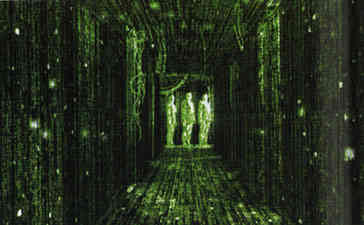 |
"plenny" means "prisoner" in ![]() Nadsat,
the
Nadsat,
the ![]() language
used in the film
language
used in the film ![]() _A
Clockwork Orange_ (vhs/ntsc)
_A
Clockwork Orange_ (vhs/ntsc) ![]() (1971) directed by
(1971) directed by ![]() Stanley
Kubrick
Stanley
Kubrick
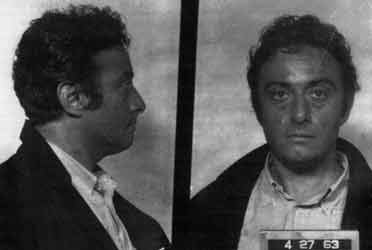 |
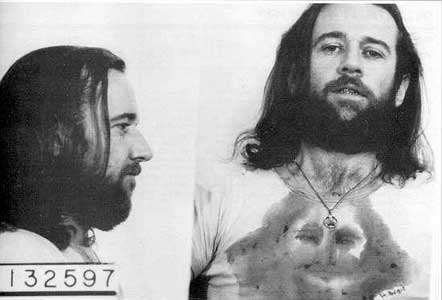 |
Prisons ... are filled to capacity
and beyond. In most areas an early-release program has been instituted
which, of course, fails to differentiate between prisoners whose crimes had
innocent victims [e.g. theft, assault and rape] and prisoners whose crimes did
not [e.g. marijuana smokers]. This puts truly dangerous criminals out
on the street sooner, giving them extra months, and in some cases years, to
rape, rob and plunder. ... Due to overcrowding caused by the ![]() War
on Drugs, prisons (not enjoyable places under the best of conditions) have
become intolerable. Some of them violate the constitutional guarantee
against "cruel and unusual punishment." With the overcrowding, any hope of rehabilitation,
job placement, counseling, therapy, or achieving any other high-minded goals
is completely derailed.
War
on Drugs, prisons (not enjoyable places under the best of conditions) have
become intolerable. Some of them violate the constitutional guarantee
against "cruel and unusual punishment." With the overcrowding, any hope of rehabilitation,
job placement, counseling, therapy, or achieving any other high-minded goals
is completely derailed.
— Peter McWilliams - _Ain't Nobody's Business If You Do_, p.242.
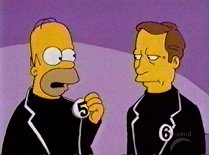 |
Eleven hundred years in prison
For 110 inmates freed by ![]() DNA
tests, freedom remains elusive
DNA
tests, freedom remains elusive
By Sharon Cohen and Deborah Hastings
ASSOCIATED PRESS
June 2 — Their time in prison surpassed 1,100 years, and all were wrongly convicted. Then they returned to lives that had passed them by. An Associated Press examination of what happened to 110 inmates after their convictions were overturned by DNA tests found that, for many of the men, vindication brought neither happy ending nor happy beginning.
"IT DESTROYED MY FAMILY," says Vincent Moto, unjustly convicted of rape and imprisoned for 10½ years in Pennsylvania. Moto, a 39-year-old father of four, survives on odd jobs, welfare and food stamps. "I have to live with these scars all my life," he says.
Richard Danziger is even less fortunate.
Wrongly convicted of rape and sentenced to life, he suffered permanent
brain damage when his head was bashed in by another inmate. Danziger was
released in ![]() 2001
after he served 11 years in Texas. Now, at age 31, he
lives with his sister, Barbara Oakley. "He basically gets up, watches
TV, goes to the park, and that’s the extent of his day," she says.
2001
after he served 11 years in Texas. Now, at age 31, he
lives with his sister, Barbara Oakley. "He basically gets up, watches
TV, goes to the park, and that’s the extent of his day," she says.
In reviewing the cases of the 110, all men, The AP found: About half had no previous adult convictions, according to legal records and the inmates’ attorneys. While some were picked up for questioning because they were known to police, many had never been in trouble before. Eleven of the men served time on death row; two came within days of execution.
Slightly more than a third have received compensation, mainly through state claims. Some have received settlements from civil lawsuits or special legislative bills. For others, claims or suits are pending; and some had lawsuits thrown out or haven’t decided whether to seek money. The men averaged 10½ years behind bars. The shortest wrongful incarceration was one year; the longest, 22 years. Altogether, the 110 men spent 1,149 years in prison. Their imprisonment came during critical wage-earning years when careers and families are built. The average age entering prison was 28. Leaving, it was 38.
Their convictions follow certain patterns. Nearly two-thirds were convicted with mistaken testimony from victims and eyewitnesses. About 14 percent were imprisoned after mistakes or alleged misconduct by forensics experts. Nine were mentally retarded or borderline retarded and confessed, they said, after being tricked or coerced by authorities. Finally freed — by determined lawyers or their own perseverance — the men were dumped back into society as abruptly as they were plucked out. Often, they were not entitled to the help, such as parole officers, given to those rightfully convicted.
"The people who come out of this are often very, very severely damaged human beings who often don’t ever fully recover," says Rob Warden, executive director of Northwestern University School of Law’s Center on Wrongful Convictions.
"Lightning strikes, they come out," he says, "and they’re in bad, bad shape."
ALL WALKS OF LIFE
They represent many walks of life — a homeless
panhandler, a therapist, a junkie, a![]() mushroom
picker, a handyman, a crab fisherman — but almost all were working-class
or poor. Of the cases reviewed by the AP, about two-thirds involved
black or Hispanic inmates, roughly reflecting state prison populations’
racial makeup.
mushroom
picker, a handyman, a crab fisherman — but almost all were working-class
or poor. Of the cases reviewed by the AP, about two-thirds involved
black or Hispanic inmates, roughly reflecting state prison populations’
racial makeup.
"All of these people have
a certain vulnerability. It may be race, class, mental health issues or
personality problems,” says Peter Neufeld, who co-founded The Innocence
Project with attorney Barry Scheck at the Cardozo School of Law in New
York. About 60 percent of the men were helped by the 10-year-old
legal assistance program.
The project’s first DNA releases came in 1989.
"They sort of get caught
in this Kafkaesque ![]() vortex,”
Neufeld adds, "and the rest is history."
vortex,”
Neufeld adds, "and the rest is history."
David Vasquez of Virginia, for example. The 55-year-old
man was mistakenly identified by a witness who said he was ![]() lurking
outside the home of a woman later found raped and murdered.
Vasquez, who is borderline retarded, confessed. Four years after his conviction,
DNA testing identified the real killer, a serial rapist.
lurking
outside the home of a woman later found raped and murdered.
Vasquez, who is borderline retarded, confessed. Four years after his conviction,
DNA testing identified the real killer, a serial rapist.
"They destroyed his life and mine," says Vasquez’s mother, Imelda Shapiro, beginning to weep. "We can’t afford to go out, and I’m afraid to go out."
TIP OF THE ICEBERG
A team of AP reporters identified
110 cases through late May in which convictions were overturned because
of DNA testing. Several other cases were pending.
Most of the 110 men had been convicted of rape; 24 were found guilty of
rape and murder, six of murder only. Legal experts differ on
who these men represent.
Neufeld says they’re the tip of the
iceberg.
 |
Privatizing Prisons
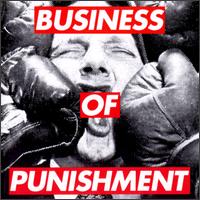 |
For-profit prisons have expanded rapidly in the past decade, capitalizing on soaring incarceration rates. The United States is experiencing the largest prison build-up in recorded history, more than quadrupling its prison population since 1980. In private prisons, the number of beds grew at an astounding rate- more than 4,000 percent between 1987-99, from 3,000 beds to 130,000.1
The business of incarceration is booming, with revenues passing the $1 billion mark in 1998. Two companies dominate the market of for-profit incarcerations-Corrections Corporation of America (CCA) and Wackenhut Corporation. These two companies control 75 percent of the for-profit incarceration market. Private prisons house only seven percent of the total inmate population, primarily because states have to enact legislation to send prisoners to for-profit facilities.
Advocates of privatizing prisons claim it cuts costs, but little evidence supports this assertion. CCA advertises that privately-managed prisons can save the state up to 28 percent on the cost of incarceration, and proponents routinely claim savings of 18-20 percent. Yet research does not support these claims. A research survey by the U.S. Government Accounting Office detected "little difference" and ultimately found no conclusive evidence to prove privatization saves money. In fact, some research finds that for- profit prisons cost more than public prisons.
When profit is a primary motivation, quality of services and public safety can be jeopardized. CCA-owned facilities in various states have experienced increased incidents of violence and inmate escapes. Investigations at the Northeast Ohio Correctional Center found an improper mixing of prisoners from multiple security levels. In other states, inadequate supervision and lax security measures jeopardized public safety.
Privatized prisons ensure profitability by courting political influence and supporting stricter sentencing laws. Corporate-owned prisons need a steady flow of inmates to maintain profits. To protect their profit margins, prison companies exert political influence by contributing thousands of dollars to state political campaigns. Lobbyists for private prisons support tough-on-crime legislation that ensures the continued need for prison space, including mandatory minimum sentences, life terms for "three strikes," and sentencing juveniles as adults for serious crimes.
In 2001, six states-Louisiana,
Nebraska, North Dakota, ![]() New
Mexico, Oregon and Wisconsin-took steps to ban the privatization of
prisons. These states used different approaches to address the problem:
New
Mexico, Oregon and Wisconsin-took steps to ban the privatization of
prisons. These states used different approaches to address the problem:
Banning privatization of state and local facilities: Louisiana enacted a moratorium on private prisons in 2001. In 2000, Illinois and New York enacted laws banning the privatization of prisons, correctional facilities, and any services related to their operation.
Banning speculative private
prison construction: For-profit prison companies have built new prisons
before they were awarded privatization contracts, to lure state contract
approval. Wisconsin's joint budget committee approved the purchase of its
only existing private prison and banned all future speculative prison construction
in the state.
Banning importation and exportation
of prisoners: To ensure that the state retains control over the quality
and security of correctional facilities, North Dakota passed a bill banning
the export of Class A and AA felons outside the state. Similarly, Oregon
allowed an existing exportation law to sunset, effectively banning the
export of
prisoners.
Requiring standards comparable to state prisons: New Mexico enacted legislation that transfers supervision of private prisons to the State Secretary of Corrections, ensuring that private prisons will be forced to meet the same standards as public facilities. Nebraska legislation requiring private prisons to meet public prison standards was overwhelmingly approved by the legislature, but pocket-vetoed by the Governor.
Public opinion supports government-run prisons over private ones. A majority of voters oppose the privatization of prisons, with Democrats, Republicans and Independents equally opposed. The public fears that privately-run prisons are more likely to cut corners, placing profits ahead of public safety. Nearly 60 percent agree that government is best suited to protect public safety-providing necessary security and preventing prisoners from escaping.
http://www.stateaction.org/issues/privateprisons/index.cfm
![]()
The Prisonaires were just that, five African-American
male singers who also happened to be inmates of the Tennessee State Penitentiary
in Nashville. Despite what normally would be considered circumstances too onerous
to start a pop music career, the Prisonaires were celebrities, albeit briefly,
after the recording of the one and only hit record, "Just Walkin' in the
Rain," which Sam Phillips released on ![]() Sun
in 1953 -- a song that three years later became a million seller for Johnnie
Ray. The band was formed by lead singer Johnny Bragg, who had been a penitentiary
inmate since the age of 17 after being convicted of six charges of rape. A singer
since childhood, Bragg had joined a prison gospel quintet soon after his incarceration,
but after a falling out, Bragg took two of its singers, Ed Thurman and William
Stewart, each of whom were doing 99 years for murder, and hooked up with recent
penitentiary arrivals John Drue (three years for larceny) and Marcell Sanders
(one-to-five for involuntary manslaughter), and the Prisonaires were born.
Sun
in 1953 -- a song that three years later became a million seller for Johnnie
Ray. The band was formed by lead singer Johnny Bragg, who had been a penitentiary
inmate since the age of 17 after being convicted of six charges of rape. A singer
since childhood, Bragg had joined a prison gospel quintet soon after his incarceration,
but after a falling out, Bragg took two of its singers, Ed Thurman and William
Stewart, each of whom were doing 99 years for murder, and hooked up with recent
penitentiary arrivals John Drue (three years for larceny) and Marcell Sanders
(one-to-five for involuntary manslaughter), and the Prisonaires were born.
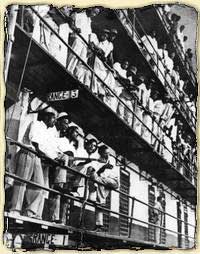 |
They were discovered by radio producer Joe Calloway, who
heard them singing while preparing a news broadcast from the prison. Calloway
suggested to warden James Edwards that the group be allowed out to perform on
the radio. Edwards, a liberal reform-minded warden who saw this as part of his
strategy of rehabilitation, agreed. In the meantime, Bragg was busy selling
songs to music publisher Red Wortham, who sent a tape of the Prisonaires' radio
performance to Jim Bulliet, a minority shareholder in Sun Records. Bulliet sent
the tape to Phillips, and despite his initial reservations (Phillips was not
a huge fan of the group's Ink Spots-style close harmony crooning), arranged
to have the groups transported under armed guard to ![]() Memphis
to record. A few weeks later, "Just Walkin' in the Rain" was released
and quickly sold 50,000 copies, a small success that was not without long-term
ramifications. Peter Guralnick notes that "Just Walkin' in the Rain"
was likely the record that captured the
Memphis
to record. A few weeks later, "Just Walkin' in the Rain" was released
and quickly sold 50,000 copies, a small success that was not without long-term
ramifications. Peter Guralnick notes that "Just Walkin' in the Rain"
was likely the record that captured the ![]() attention
of a young Elvis Presley as he read about the studio, the label, and more importantly,
Phillips. The attendant publicity was more than had been predicted, and soon
warden Edwards was allowing the group out on day passes to tour throughout the
state of Tennessee. The band became favorites of the state's governor, Frank
Clement, and frequently performed for assembled guests at the governor's mansion.
attention
of a young Elvis Presley as he read about the studio, the label, and more importantly,
Phillips. The attendant publicity was more than had been predicted, and soon
warden Edwards was allowing the group out on day passes to tour throughout the
state of Tennessee. The band became favorites of the state's governor, Frank
Clement, and frequently performed for assembled guests at the governor's mansion.
The group never had another hit, and within a year they were finished, the result of the rise of rock & roll and Phillips' preoccupation with a young singer from Tupelo, MS, named Presley. Most of the Prisonaires had no careers outside of the prison with the notable exception of Bragg, who, despite remaining in jail off and on until 1969, recorded some marginal R&B and country for small labels in Nashville.
![]()
"A human being is part of the whole called
by us universe , a part limited in ![]() time
and space. We experience ourselves, our thoughts and feelings as something separate
from the rest. A kind of optical delusion of consciousness. This delusion is
a kind of prison for us, restricting us to our personal desires and to affection
for a few persons nearest to us. Our task must be to
time
and space. We experience ourselves, our thoughts and feelings as something separate
from the rest. A kind of optical delusion of consciousness. This delusion is
a kind of prison for us, restricting us to our personal desires and to affection
for a few persons nearest to us. Our task must be to ![]() free
ourselves from the prison by widening our circle of compassion to
free
ourselves from the prison by widening our circle of compassion to ![]() embrace
all living creatures and the whole of nature in its beauty... We shall require
a substantially new manner of thinking if mankind is to survive." -
embrace
all living creatures and the whole of nature in its beauty... We shall require
a substantially new manner of thinking if mankind is to survive." - ![]() Albert
Einstein
Albert
Einstein
![]()
film _Papillon_ (vhs/ntsc)![]()
faces: Dustin Hoffman, Steve McQueen
track _Butterfly McQueen_ MP3
by The Boo Radleys off of _Giant Steps_ promo cassette
on Sony (1993)
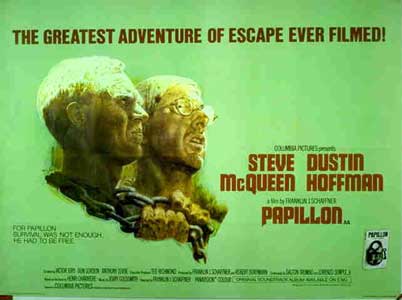 |
![]()
